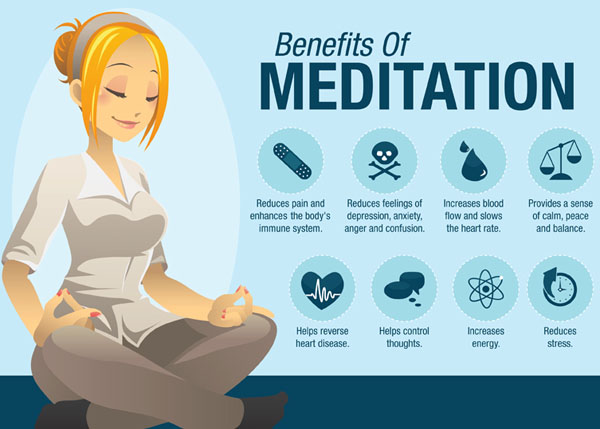
When you think of meditation, you might laugh! It conjures pictures of old white yogis or Buddhist monks with loud, constant chants. The reality is much different.
At its core, meditation is a way of gaining control of processes your body normally does on its own. It’s a way of turning off auto-pilot and re-centering yourself in the moment. While it sounds rather philosophical, the effects are anything but: lowered heart rate, lowered stress level, and better concentration. Naturally, meditation can seriously benefit your mental health.
Meditation’s effect on anxiety depends a lot on its source. However, in combination with therapy, it can be helpful for reducing mental stress. If you want to get started on your own or just try it for fun, here are some helpful tips.
Clear the Time
The most important element of meditation is exclusivity. It’s not music or TV playing in the background; meditation is the only thing you are doing in the moment you’re doing it.
For your average student or professional, this can seem daunting. How can I not answer e-mails for 10 minutes? What if I miss something? Thankfully, the average meditation session is around 5-10 minutes. Turn your phone off!
Alternatively, add important family to your “favorites” list. Turn on your phone’s Do Not Disturb mode, and it will silence all calls and messages not on that list.
Have a Plan
So you sit down to meditate. You turn your phone off, relax, and close your eyes. Suddenly, you’re lost.
One of the biggest hurdles of starting meditation is that it can feel “stupid.” A lot of times, this is because newbies don’t know what to do, exactly. Though meditation is relaxing, it should be planned. Two good, simple exercises for beginners are:
- Find a breathing rhythm. Breathe slowly and deeply, and focus solely on that. Keep your back straight and your breaths deep. Do this for your entire session.
- Do a body scan. In a body scan, you focus your “feeling” on a particular part of your body, one part at a time. For instance, observe everything your right foot feels: textures, temperature, comfort and discomfort. By focusing on a single, narrow field of sensation, you can tune out some of the noise stress causes in your brain.
Use a Guided Tool
Meditation can be daunting at first. If you have trouble meditating by yourself, you’re not the only one! Luckily, there are lots of apps for guided meditations that require no instructor.
Buddhify (also on the App Store) may be the best meditation app for the busy person. It features meditations as short as 3-4 minutes that are tailored to what you’re doing at the time: feeling stressed, on your lunch break, waking up, or heading to bed. It’s also only $2.99 and is frequently updated. Just plug in your headphones, get comfortable, and go.
Be Patient
Almost as much as taking time to do it, taking time to get good at meditation is important.
The entire goal of meditation is to focus on the moment. So if you find your mind wandering or it feels silly at first, don’t give up. Think of it as a long game, an investment in your mental health rather than a quick fix. Even far down the road, you’ll have some sessions that don’t feel as effective.
However, you will get to the point where you look forward to it. And that’s the best.


